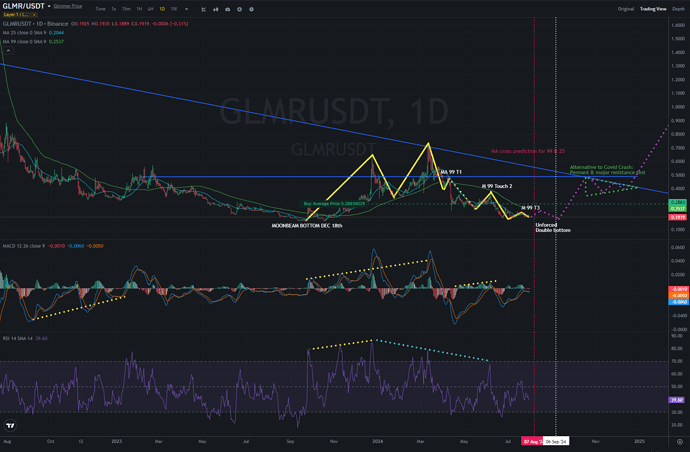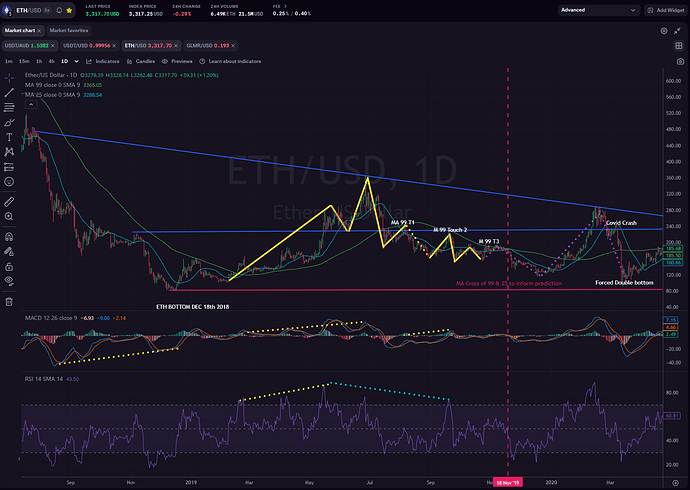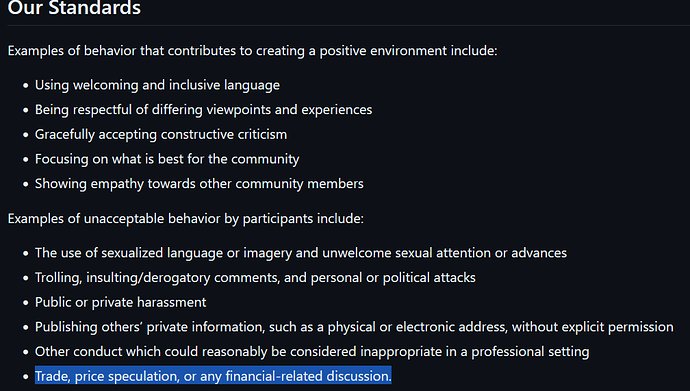The Moonbeam Foundation recently engaged Gauntlet to conduct a macroeconomics and tokenomics study to address the need for a sustainable business model for critical ecosystem functions. The goal was to identify levers and propose adjustments to increase the sustainability and development of the Moonbeam ecosystem. Due to the similarities in mechanism design and applications and pending future analysis, these approaches and insights could also be used for the Moonriver ecosystem.
Levers Considered
Gauntlet analyzed four key macroeconomic and tokenomic levers:
- Parachain Bond Reserve (PBR) Take Percentage: This represents the 1.5% proportion, of the aggregate 5% inflation, allocated to the PBR that could be used to pay for existing network infrastructure costs—either by the Foundation directly, or by way of the Moonbeam community controlled on-chain treasury. Increasing this percentage would allow a portion of the growing PBR inflation to be redirected toward supporting ecosystem operational costs.
- Stake Increase Percentage: This represents the proportion by which the Moonbeam Foundation increases its contribution to the total stake constituted by the active set of collators. For example, with roughly 384 million GLMR in the active set, a stake increase percentage of 10% would mean that the Foundation would add 38.4 million more GLMR to the active set, resulting in an updated active set size of 422.4 million GLMR.
- Transaction Fee Take Percentage: This represents the proportion of transaction fees that the Moonbeam protocol redirects to the on-chain treasury, with the remaining fees burned. The current value is 0.2.
- Transaction Fees Multiplier: This represents the potential impact of conducting programs that aim to meaningfully increase transaction volume on the Moonbeam network, which would implicitly lead to higher transaction fees, assuming the Transaction Fee Take Percentage remains constant at its current value of 0.2.
Gauntlet assessed each lever’s potential revenue opportunity and practicality of implementation. The study provided valuable insights into each lever’s relative feasibility and effectiveness.
Joint Impact Analysis
Given the complex nature of the system that represents Moonbeam’s macroeconomics and tokenomics, analyzing the joint impact of these four levers is crucial. To this end, Gauntlet employed a two-step modeling approach.
First, Gauntlet built a simulation of Moonbeam’s operations, considering varying configurations of the levers and future price scenarios for GLMR. This simulation was designed to ensure that the proposed changes would not negatively impact the continued operations of Moonbeam’s network and ecosystem. Next, Gauntlet built a second set of models that distill the data generated from the simulation into a notion of marginal impact. The marginal impact represents the positive revenue opportunity per unit change of each lever individually while accounting for the effects of the other variables in the system. By increasing revenue, the Moonbeam ecosystem can improve its sustainability.
In addition to marginal impact, Gauntlet assigned each lever a practicality score. This score represents the practical difficulty of implementing a change to a given lever. Factors considered include technical complexity, potential higher-order effects that are more difficult to model, community appeal, etc. This score was assigned manually to each lever.
Finally, to determine an overall prioritization, Gauntlet computed a hybrid desirability score for each lever. This score combines the practicality and marginal impact scores, providing a single metric with which to rank the levers.
The combination of these modeling approaches and the hybrid desirability score enables the Moonbeam Foundation to make informed decisions about which levers to prioritize for the ecosystem’s sustainability and growth to present to the community. Gauntlet used the insights gained and the outputs of this research to inform our proposed adjustments below.
Agile CoreTime Funding Analysis
In addition to the four levers, Gauntlet conducted an in-depth analysis of the funding scenario for Agile CoreTime computational resources once Polkadot transitions to this model. The key findings are as follows:
- The Moonbeam Foundation currently has 165,000 DOT bonded for a 24-month parachain slot lease and 126,000 DOT being staked, earning a ~9.27% annual return.
- Estimates for CoreTime pricing were derived from Polkadot community forum discussions (Initial Coretime Pricing - Governance - Polkadot Forum), suggesting a range of $1,000 to $2,500 per core per month.
- Assuming a (highly) conservative estimate of 10 cores needed for Moonbeam each month, the annual CoreTime costs could range from $120,000 (at $1,000 per core per month) to $300,000 (at $2,500 per core per month).
By unbonding the 165,000 DOT used for the parachain slot lease and combining it with the 126,000 DOT being staked, the Foundation would have a total of 291,000 DOT to invest in a vehicle to pay for CoreTime resources.
Given the current DOT staking rate of ~16.7%, staking the Foundation’s 291,000 DOT for a year would generate a return of ~26,975 DOT. This return is sufficient to cover the estimated CoreTime costs under most pricing scenarios, with the Foundation potentially needing to supplement the initial stake with a small amount in the highest-cost scenario.
The analysis demonstrates that the Moonbeam Foundation can largely sustain CoreTime payments using its existing DOT holdings and staking rewards alone, providing confidence in the Foundation’s ability to transition to the new model of paying for computational resources on an ongoing basis.
Proposal: Increasing PBR Take Percentage to 80% and Enhancing Community Participation
Gauntlet proposed several scenarios to the Foundation, and we’re now presenting the selected scenario here. This proposal aims to leverage the findings of our study to optimize resource allocation and increase community participation in decision-making. The key components of this proposal are as follows:
- Self-Sustaining CoreTime Costs: As demonstrated by the Agile CoreTime funding analysis, Gauntlet has reason to believe that the network’s CoreTime costs can be paid for in a self-sustaining manner using its existing DOT holdings and staking rewards.
- Repurposing PBR Revenue: Given the ability to fund CoreTime costs through DOT staking, the Foundation proposes to increase the Parachain Bond Reserve (PBR) Take Percentage to 80%. The funds from this increased take will be used to further subsidize key ecosystem infrastructure costs which, in line with the broadly intended use of PBR funds, will help to further secure the network (see GLMR Transparency Commitment).
- Treasury Allocation: The revenue from the increased PBR Take Percentage could eventually be redirected to the on-chain Treasury. This allows for a governance process and proposal system to assess and deliberate on certain spending choices.
- Encouraging Community Proposals: If PBR revenue is redirected to the treasury, the Moonbeam Foundation will encourage the community to submit proposals for covering a subset of the costs currently borne by the Foundation. This approach fosters discussions on alternative providers and the necessity of certain expenses, potentially improving the return on investment for ecosystem costs.
- Exploring a 10% Stake Increase in the Future: While not part of the immediate proposal, Gauntlet’s analysis suggests that this change represents yet another safe and meaningful opportunity for the Foundation to further fund infrastructure costs, grants, expansion, etc. We encourage the community’s feedback on this point.
It is important to note that the additional funds from the increased PBR Take Percentage are not intended for unrelated or speculative purposes. Instead, the Foundation aims to stay true to the original goal of these funds, which is to continue supporting core ecosystem infrastructure costs and ensuring Moonbeam’s long-term sustainability as a parachain on the Polkadot network.
Next Steps
The above analysis provides insights into potential strategies for ensuring the long-term sustainability and growth of the Moonbeam ecosystem. As a next step, we invite the community to provide feedback on the proposed changes and their implications, to suggest additional strategies that could be considered, and to move forward with determining the implementation plan for Moonbeam and Moonriver. We look forward to fruitful community discussions—and hopefully future collaborations—to help shape the future of Moonbeam and Moonriver.


